All-There-Is in Ten Hundred Words
Air Date: Week of October 24, 2014
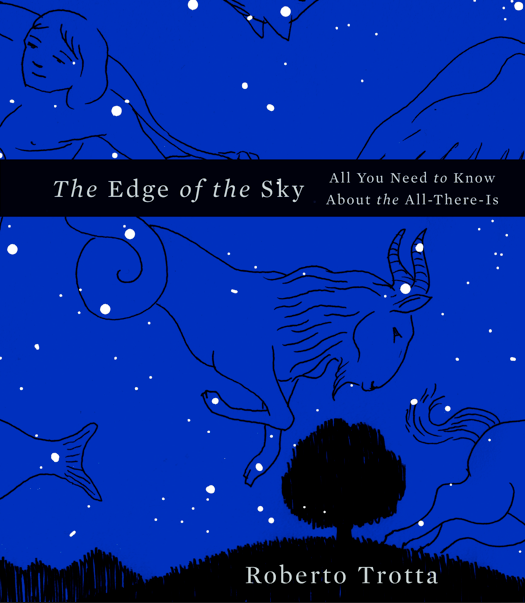
Roberto Trotta, an astrophysicist at Imperial College, London has written a new book, The Edge of the Sky, that describes the cosmos in the one thousand most common words in the English language. He tells host Steve Curwood about the challenges of describing All You Need to Know About the All-There-Is, and how non-scientific words can make science accessible to all.
Transcript
CURWOOD: And now, a new book that aims beyond the sky. We’re talking about the universe and cosmology, which most of us at best find confusing. "The Edge of the Sky" by Roberto Trotta aims to simplify and clarify. The book explains the universe in the 1,000 most-used words, or rather, the “all-there is” and “ten-hundred”, since “universe” and “thousand” aren’t on that list. Roberto Trotta studies dark matter and what he calls the “dark push” and the early “all-there-is” at Imperial College in London and joins us. We’re happy to have you on Living on our Home-world, Roberto.
TROTTA: Thank you, Steve. Great to be here.
CURWOOD: What inspired you to use only the 1,000 most common English words to tell the story of the cosmos?
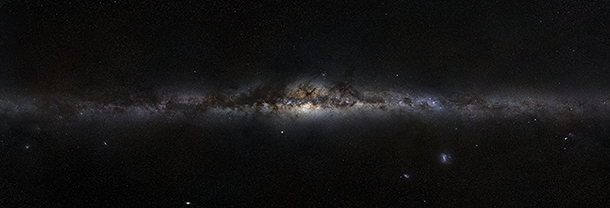
The Edge of the Sky describes our universe (the “All-There-Is”) using only the ten hundred of the most common words in the English language. Since the words “milky” and “way” aren't on the list, author Roberto Trotta refers to our galaxy – or “Star-Crowd” – as the “White Road.” (Photo: ESO/S. Brunier; Wikimedia Commons CC BY 3.0)
TROTTA: For a decade, I had been looking for new ways of connecting people with cosmology, the study of the universe, and the mystery, and the great sense of wonder that the universe inspires. Then one day something interesting happened to me. I stumbled on an XKCD cartoon - that's a web-based comic series. It was a picture of the Saturn 5 moon rocket, but it was labeled only using the most common 1,000 words in English. So instead of calling it, Saturn 5 moon rocket, it was called the Up-Goer 5 because it's something that goes up, it's a rocket, rocket is not one of the words. So I thought, actually, perhaps, here is a language, here is a format that can be used to get rid of all the jargon that scientists sometimes use to talk about the science, and talk about entire universe, that’s to say the all-there-is, in simple language that anybody can understand.
CURWOOD: So please share with us some of the most surprising words that are on the list, and some other ones that aren't.
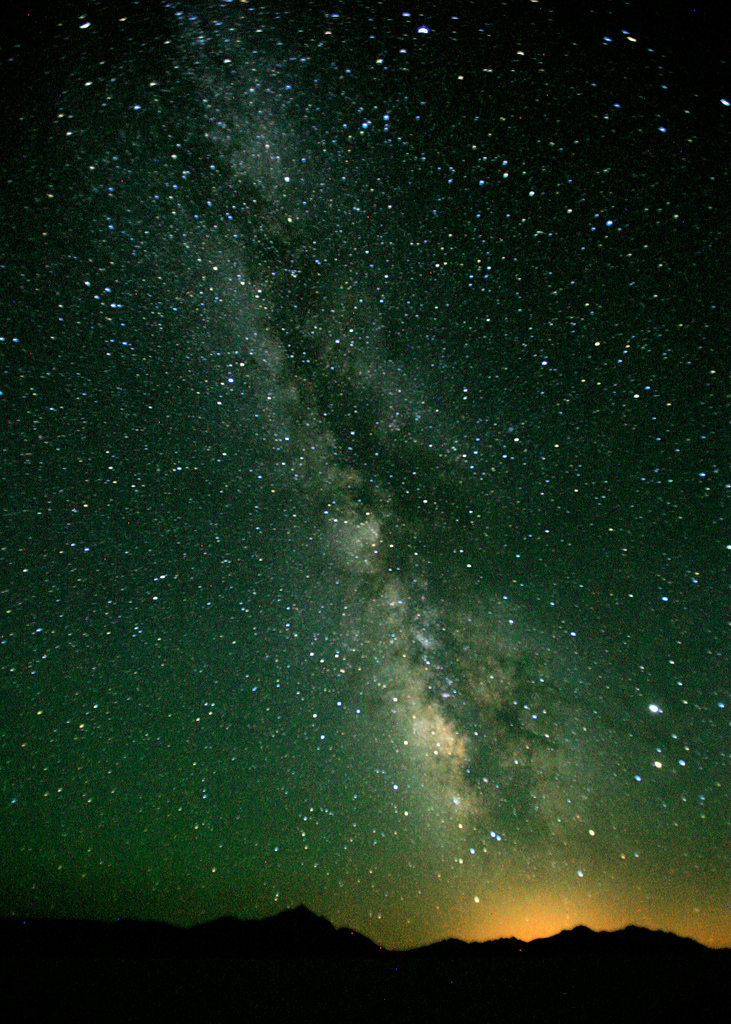
Since the words “milky” and “way” are not among the 1,000 most common English words, Trotta used the phrase “White Road” to refer to our home galaxy. (Photo: Steve Jurvetson; Flickr CC BY 2.0)
TROTTA: Well, it was very surprising to me in fact to go to the list and see that fairly common words, like energy, for example, is not on the list. So I couldn't use energy, I couldn't use moon, I couldn't use science, or scientist, or physics, gravity. So all these words that certainly I would have wanted to be able to use to talk about all-there-is...were not on the list. So I had to come up with this new language, this new way of talking about those notions. There were other words that I could make good use of. Thankfully, star was on the list, and so I could talk about planets, which is a word that I couldn't use, as being the "crazy stars" because they go around in a back-and-forth fashion apparently in the sky, so they're like crazy stars. Particle was not one of the words on the list. Television was one of the words. I did use "television" in the book, but it wasn't one of the ones that I necessarily wanted to use.
CURWOOD: So, Roberto, what did you find most difficult to explain using these 1,000 words in the English language.
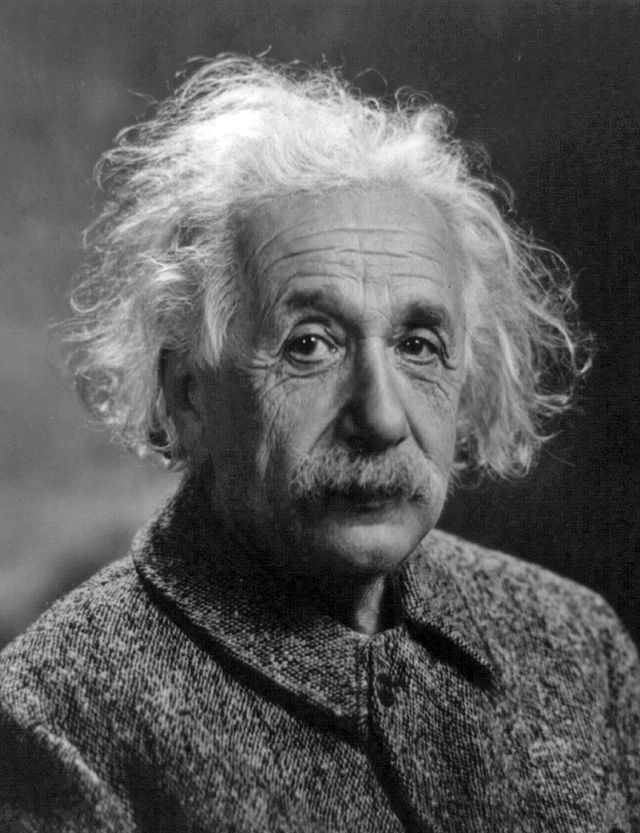
Trotta used scientific theories, such as those from Albert Einstein, to describe the cosmos. (Photo: Oren Jack Turner; Wikimedia Commons/public domain)
TROTTA: At the beginning, everything was difficult because it was very hard to come up with metaphorical, pictorial images that would explain those sometimes abstract and hard concepts: dark matter, dark energy, the big bang itself, the destiny of the universe...in simple language. But then, little by little, this new voice started to emerge from the format itself, and it grew on me, and things became simpler because I started getting the language, getting the new format, until I got to the point where I wanted to talk about the very early universe, that’s to say the very first fraction of a fraction of a fraction of a second after the big bang, which by the way is not called the big bang because bang is not one of the words. And so, at that point it was very hard because I couldn't use big bang, I couldn't use fraction, to say fraction of a second, I couldn't use particle, I couldn't use energy, all of these important words weren't available. I couldn't use fog. Why would fog be important? well, because the early universe is some kind of high-energy fog. But in the expression, high-energy fog, I didn't have energy and I didn't have fog.
CURWOOD: So what did you choose?
TROTTA: So in the end, I chose a more metaphorical representation of things, and so particles, of which the early universe is full of, became drops. And in particular, I'm talking about the various kinds of drops, that is to say, the kind of particles that inhabited the early universe as if they were characters in a story, and so we meet the simple drops and the very simple drops and the heavy drops and dark matter drops. There's the drop of Mr. Higgs, there are mirror drops. So there's all sorts of characters that populate the story. And it becomes a little bit like a scientific fairy tale if you like.

The “IceCube” Neutrino Observatory, which Trotta depicts as “a huge eye . . . inside the ice, in a cold place near the bottom of our Home-World,” that tries to observe signs of “dark matter drops.” (Photo: Amble, Wikimedia Commons CC BY-SA 3.0)
CURWOOD: Now, of course, you're an astrophysicist and you use all kinds of complicated language in your business. How might you now see the universe in a different light having gone through this exercise?
TROTTA: Definitely. Definitely. Writing this book really gave me a new pair of eyes, and a refreshingly different novel look on the universe itself. It forced me to really think about those concepts in a new way. One of the aims of my book was to bring back creativity and passion into science. Science, of course, is a very intellectual sometimes activity, but equally it's important to remember that it's a human activity and as such is full of passion and creativity and the aim of the book is to bring some of that back into the story, and to speak to people's hearts, not to their minds only.
CURWOOD: Who do you want to read this book? Who do you have in mind?
TROTTA: I like to think of the "Edge of the Sky" as a book for children of all ages.

The Large Hadron Collider – or “Big Ring” – accelerates protons to produce new types of particles, which may include dark matter. (Photo: NASA; CC government work)
CURWOOD: Why is it important for you to make science accessible to everyone?
TROTTA: There are many reasons, but let me just talk about two. Science is an expensive business and most of our scientific research, at a fundamental level, the kind of science that I do is paid for by taxpayers' money, and so it's only fair and part of the job of a scientist should be about to spend our time, as professional scientists, some of our time talking to the public and engaging in conversation about why do we need to do this, what are the objectives of the work, why do we need to spend money, taxpayers' money, to do it. But also, another reason for me to talk about science with the general public is that science is a great cultural activity. Science in a way, is akin to the arts. Why do we make great art, why do we enjoy going to museums and experiencing art? Because it makes our lives better, more fuller, more worth living in a sense, and everybody should be able to participate. This is too important a quest to be left to the professional scientist.
CURWOOD: Now, typically when you step into a laboratory, you don't see a lot of women, but in your book, the scientist here is a woman. Why?
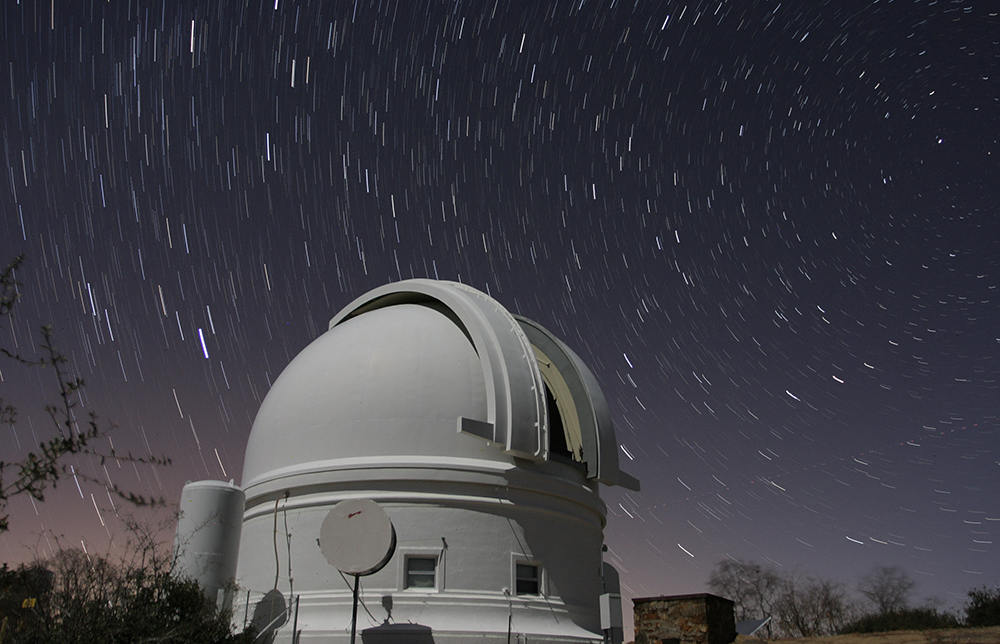
Palomar Observatory is anthropomorphized as a character in the book, called “Big-Seer.” (Photo: NASA; CC government work)
TROTTA: Precisely for this reason. Unfortunately women are under-presented in science, certainly in my field, and so I hope by this and other means to help breaking this stereotype that all scientists are middle-aged, old men in white coats with long white beards and a bald patch on their heads. And we need more women in science and if by presenting a scientist as a female character I can help inspire some young girls to be interested in science and to pursue a career in science, then that would be a fantastic result for me.
CURWOOD: Summarize for me in your words, in those 1000 words, what we do need to know about the universe, what you call the all-there-is.

When Trotta tells the history of the planets or “Crazy Stars,” he cannot use the name “Neptune”, instead he writes that it was named after the “Water-God.” (Photo: NASA; CC government work)
TROTTA: There are many things that are still not understood about the all-there-is. For example, the big why questions that certain people are asking nowadays are, What is dark matter made of? What is the dark push made of that is making the all-there-is gro faster and faster with time? And we have learned there is 20 times more dark matter than dark push in the all-there-is than there is normal matter, and we don't understand it. Most of the all-there-is is unknown, and we really don't know what it is made of. So those are the biggest questions that certain people like myself are asking today and we hope to find out answers that will help us understand our place in the all-there-is.
CURWOOD: Roberto, chapter 8 of your book ends with a profound statement about the ever-increasing expansion of the universe the all-there-is. Please read that passage for us.
TROTTA: You can't stop the dark push. All of the star crowds will fly away from us faster and faster, until at some point, far away in time, we won't be able to see them anymore. They will be too far away for the light to reach us. Stars will die, and the star crowds will turn off. The all-there-is will become even bigger and almost totally empty. Nothing will be left but dark silence.
CURWOOD: So, how ultimately terrifying is this idea that the universe will eventually become dark silence?
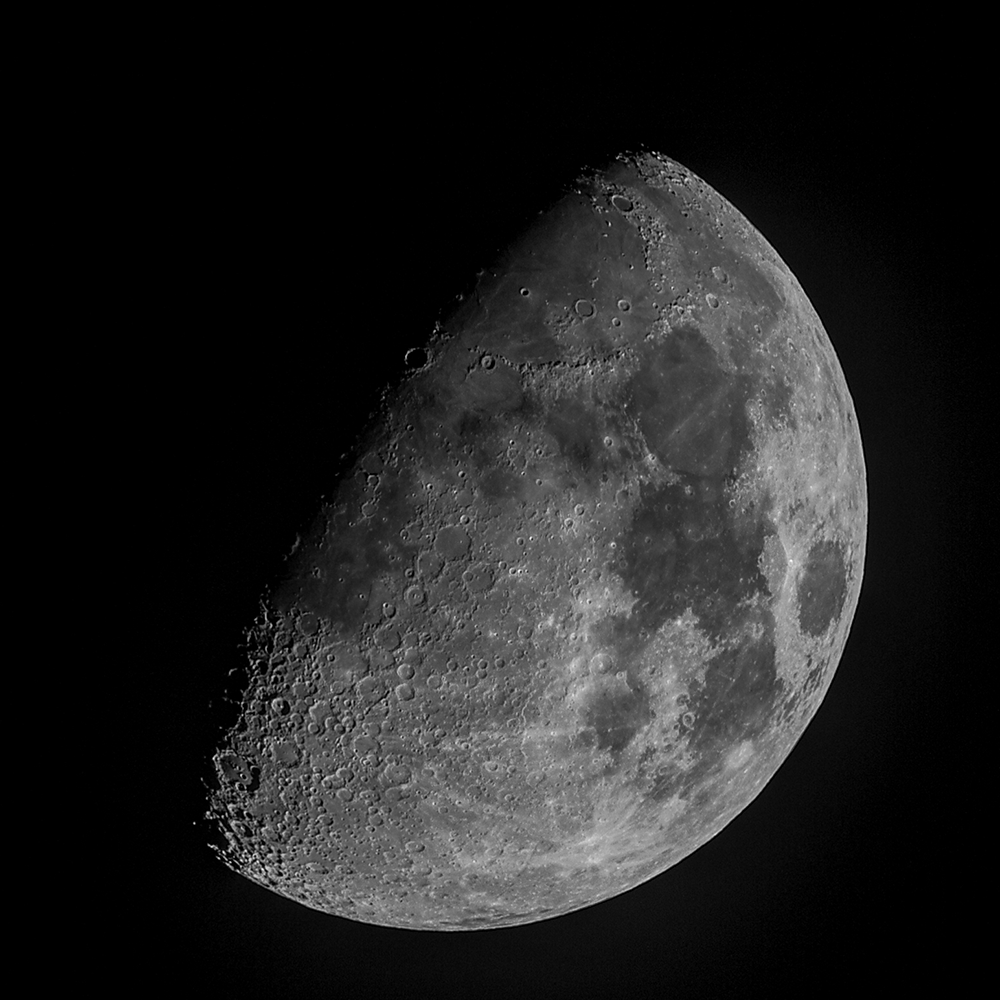
“Moon” is not one of the ten hundred most common English words; in The Edge of the Sky, our “Home-World’s” satellite becomes “Sun’s Sister.” (Photo: Stephen Rahn; Flickr CC BY-NC-SA 2.0)
TROTTA: It is terrifying intellectually, but not as much as the prospect of...the many threats that are closer to home and closer to us in time: climate change, epidemics, all sorts of threats that are threatening us as humans in a more direct and more timely fashion. But certainly if we think about the great grand scheme of things, and the great picture of the cosmos that emerges, thinking of a universe that's going to be empty and dark, is pretty scary.
CURWOOD: By the way, Roberto, in your book, you touch on the multiverse theory. Talk a little bit about that for me now and how we could try to understand that.
TROTTA: The multiverse theory is something very speculative. We have no idea whether any of this really exists out there, but in the book, I talk about it in very simple language. I talk about a room full of coins, a table where we find 400 coins, that are all showing heads. And so if you were to walk into such a room, you'd certainly think that somebody's been there before you and has put down all the 400 coins heads up just like that, and you wouldn't imagine for a second that they've all been thrown up and just landed at random, all heads up. And yet, the universe we happen to live in is as improbable as getting 400 heads out of 400 coins all at once, which is a tiny tiny probability. It's almost zero.
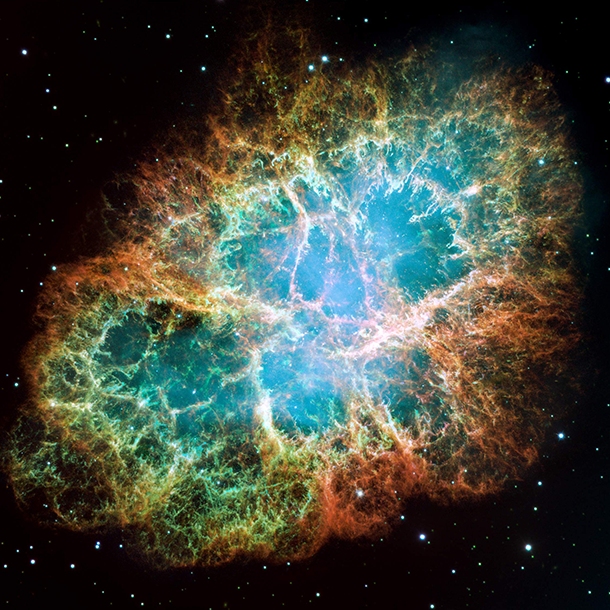
In Trotta’s book, the term supernovae is translated to “Dying Stars.” (Photo: NASA; CC government work)
TROTTA: And so the big question is: "Why is our universe specifically strange. Why is it so improbable?" And perhaps the idea is that the dark push, the mystery of the dark push has something to do with it, and a tentative explanation that some scientists are beginning to give is that perhaps it's a question of just having many many rooms having many many flips of the 400 coins and sooner or later you end up with one room that has all of the 400 coins in it showing heads up, just like that, just by the laws of chance, it’s only a question of having enough rooms, and that's to say, having enough universes in the multiverse, a collection of many many many different universes, and we will live in one that's just right for us, one that's very improbable, but that happened just by chance.
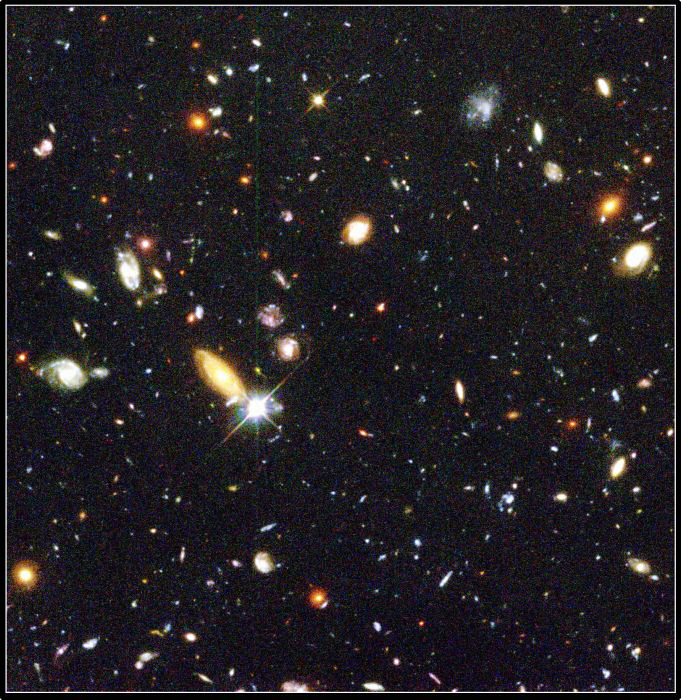
“Star-Crowds,” or galaxies, typically contain about a hundred billion stars, lots of gas, and even more dark matter, Trotta writes in his book. (Photo: NASA; CC government work)
CURWOOD: Some people listening to us will say, well, either this all came from a cosmic roll of the dice or a flip of a coin, as you say, or maybe there's God involved. What do you say?
TROTTA: Well, certainly, that's...there will always be this question, science, even with the tentative explanation of the multi-verse is ultimately silent about the meaning of physics, the meaning of the universe and the meaning of facts. And so the meaning of all our scientific discoveries is the ultimate fundamental meaning of reality, and the Why are we here? questions are questions that science cannot methodologically answer, so it remains for each individual to find meaning and a sense of direction in their lives in any way that's meaningful to them.

Roberto Trotta is an astrophysicist at Imperial College London. (Photo: Courtesy of Roberto Trotta)
CURWOOD: Before you go, your favorite star?
TROTTA: My favorite star hasn't been discovered yet. It's probably a dark star in a dark nebula made of dark matter.
CURWOOD: [LAUGHS] Roberto Trotta studies dark matter, dark energy, and the early universe as an astrophysicist at Imperial College in London. Professor Trotta, thanks so much for your time today.
TROTTA: Thank you, Steve. Great pleasure talking to you.
Links
The 1,000 most common words in the English language
The original xkcd.com “Up Goer Five” webcomic explaining a space shuttle in 1,000 words
Edit text for the 1,000 most common words in the English language
Living on Earth wants to hear from you!
Living on Earth
62 Calef Highway, Suite 212
Lee, NH 03861
Telephone: 617-287-4121
E-mail: comments@loe.org
Newsletter [Click here]
Donate to Living on Earth!
Living on Earth is an independent media program and relies entirely on contributions from listeners and institutions supporting public service. Please donate now to preserve an independent environmental voice.
NewsletterLiving on Earth offers a weekly delivery of the show's rundown to your mailbox. Sign up for our newsletter today!
 Sailors For The Sea: Be the change you want to sea.
Sailors For The Sea: Be the change you want to sea.
 The Grantham Foundation for the Protection of the Environment: Committed to protecting and improving the health of the global environment.
The Grantham Foundation for the Protection of the Environment: Committed to protecting and improving the health of the global environment.
 Contribute to Living on Earth and receive, as our gift to you, an archival print of one of Mark Seth Lender's extraordinary wildlife photographs. Follow the link to see Mark's current collection of photographs.
Contribute to Living on Earth and receive, as our gift to you, an archival print of one of Mark Seth Lender's extraordinary wildlife photographs. Follow the link to see Mark's current collection of photographs.
 Buy a signed copy of Mark Seth Lender's book Smeagull the Seagull & support Living on Earth
Buy a signed copy of Mark Seth Lender's book Smeagull the Seagull & support Living on Earth

